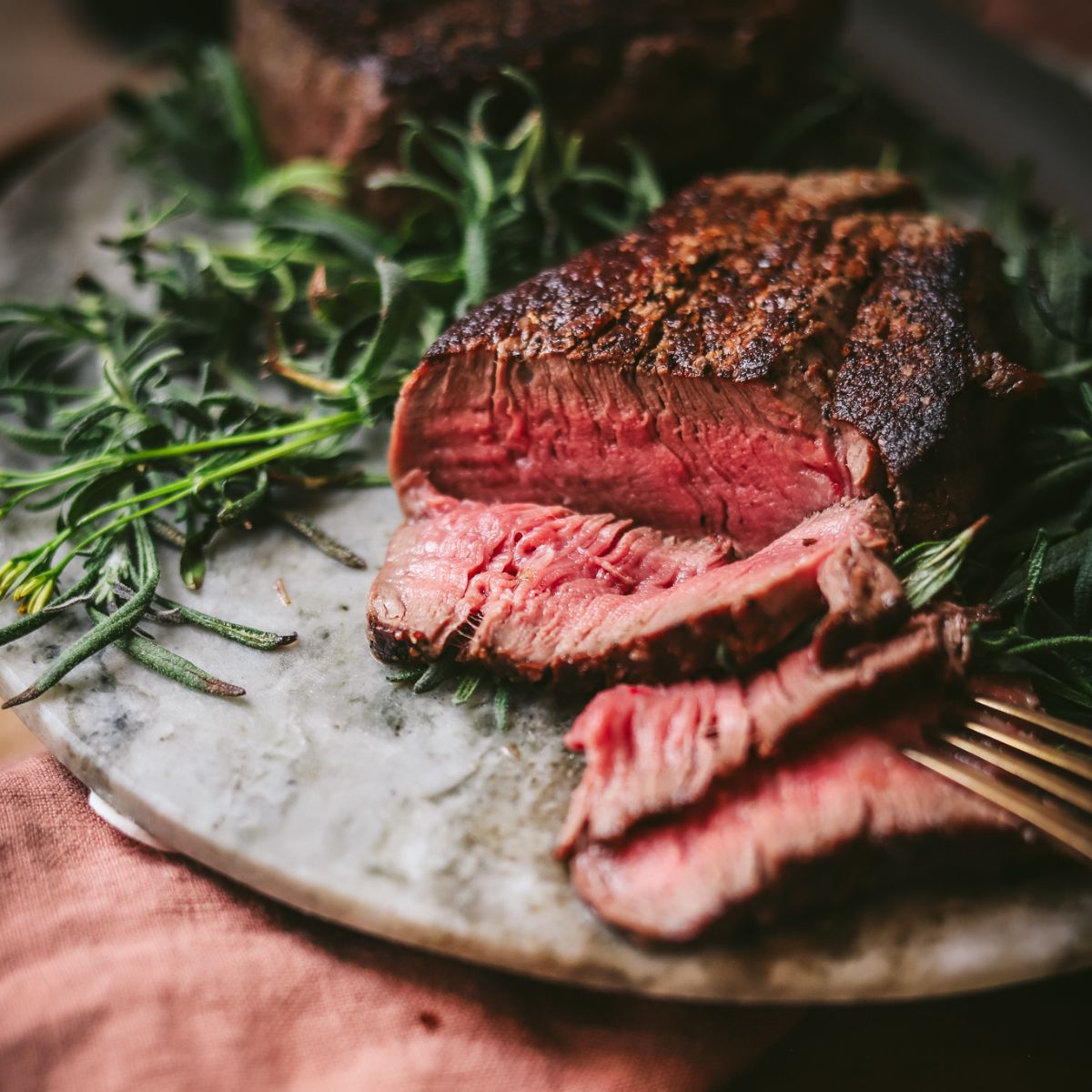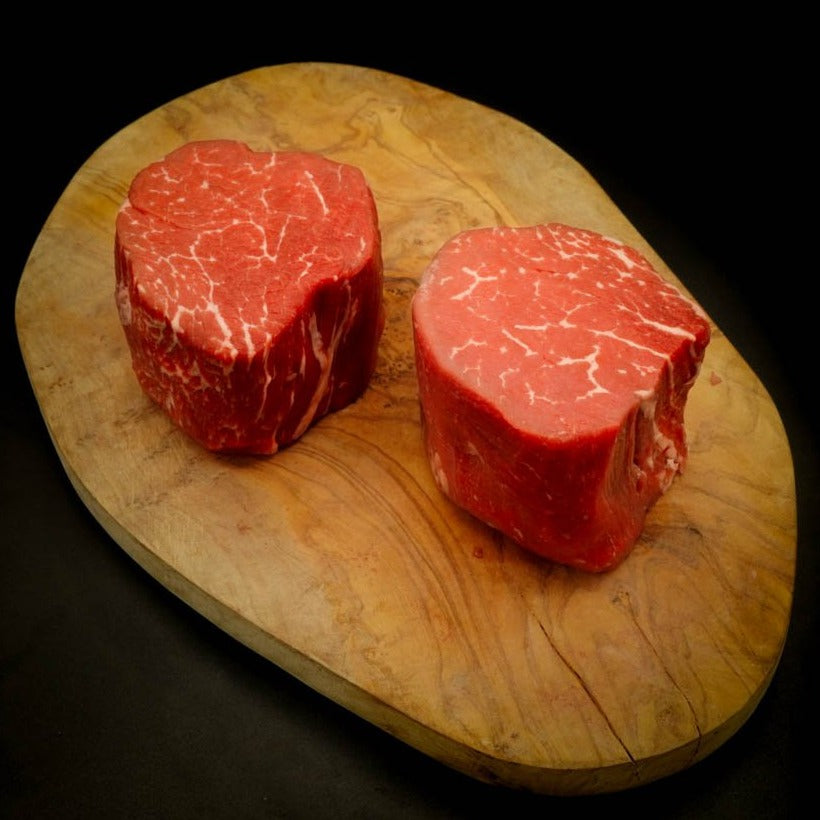Introduction

Welcome to the ultimate steak showdown: Beef Tenderloin vs Filet Mignon. These two cuts of beef are renowned for their tenderness and mouthwatering flavors, making them a favorite choice for steak enthusiasts around the world. In this article, we will delve into the unique characteristics of each cut, explore their cooking methods, and compare their nutritional values. We will also provide cooking tips and recommendations to ensure you can savor the juiciest and most flavorful steak possible. Whether you prefer the lean and delicate Filet Mignon or the slightly more flavorful Beef Tenderloin, this article will help you make an informed decision based on your preferences and the occasion.
Understanding The Differences Between Beef Tenderloin And Filet Mignon
Beef Tenderloin and Filet Mignon may sound similar, but they are actually two distinct cuts of meat. The key difference lies in their location within the cow. Beef Tenderloin refers to the whole muscle that runs along the backbone and is long and cylindrical in shape. On the other hand, Filet Mignon specifically refers to the smaller, tapered end of the Tenderloin. This portion is highly prized for its tenderness and is often considered the most luxurious and flavorful part of the Tenderloin. So, while Filet Mignon is part of the Beef Tenderloin, it is just one portion of it.
Beef Tenderloin Explained
Beef Tenderloin is a highly sought-after cut of beef known for its tenderness and mild flavor. It is a long and cylindrical muscle that runs along the backbone of the cow. This cut is considered one of the most luxurious and premium parts of the cow. Beef Tenderloin is versatile and can be used to create various steak cuts or even a mouthwatering roast. It is typically cooked using dry-heat methods such as grilling, roasting, or broiling to preserve its tenderness and enhance its natural flavors. Whether served as steaks or a whole roast, Beef Tenderloin is sure to impress any meat lover.
Beef Tenderloin: Characteristics And Best Cooking Methods
Beef Tenderloin, also known as filet de boeuf or fillet, is a highly coveted cut of beef due to its exceptional tenderness and mild flavor. It is a cylindrical muscle located along the backbone of the cow. The characteristics that make Beef Tenderloin stand out include its melt-in-your-mouth texture and minimal marbling. To bring out the best in this cut, it is recommended to use dry-heat cooking methods such as grilling, roasting, or broiling. These methods preserve the tenderness and enhance the natural flavors of the beef, resulting in a juicy and succulent dining experience.
Beef Tenderloin: Pros And Cons Compared To Filet Mignon
Beef Tenderloin and Filet Mignon are both exceptional cuts of meat, but they do have their own unique characteristics and considerations. Let’s take a closer look at the pros and cons of each:
Beef Tenderloin:
Pros:
– Exceptional tenderness: Beef Tenderloin is renowned for its melt-in-your-mouth texture, making it a favorite among steak enthusiasts.
– Versatility: This cut can be prepared in various ways, such as roasting, grilling, or broiling, allowing for a wide range of cooking options.
– Minimal marbling: Beef Tenderloin has a leaner composition compared to other cuts, which can be appealing to those looking for a leaner option.
Cons:
– Price: Due to its tenderness and desirability, Beef Tenderloin tends to be more expensive compared to other cuts of beef.
– Less flavor: While the tenderness of the meat is unbeatable, Beef Tenderloin can be relatively mild in flavor compared to cuts with more marbling.
Filet Mignon:
Pros:
– Unparalleled tenderness: Filet Mignon is considered the epitome of tenderness, with a buttery texture that almost melts in your mouth.
– Intense flavor: Despite being lean, Filet Mignon offers a robust flavor profile that is often described as rich and succulent.
– Portion control: Filet Mignon is typically served in small, individual portions, making it an ideal choice for fine dining occasions.
Cons:
– Price: Similar to Beef Tenderloin, Filet Mignon can be quite expensive due to its tenderness and high demand.
– Limited cooking options: While Filet Mignon can be prepared using various techniques, it is generally recommended to cook it using dry-heat methods like grilling or broiling to preserve its tender texture.
Ultimately, the choice between Beef Tenderloin and Filet Mignon comes down to personal preference and budget. Both cuts offer exceptional tenderness, but Beef Tenderloin may be preferred by those looking for a leaner option, while Filet Mignon is favored by those seeking a more intense and flavorful dining experience.
Filet Mignon Unveiled
Filet Mignon, derived from the French term meaning “dainty fillet,” is a highly sought-after cut of beef that is renowned for its unparalleled tenderness and exquisite flavor. Cut from the small end of the beef tenderloin, this portion is incredibly lean, making it a healthier option for steak lovers. Its buttery texture and melt-in-your-mouth quality are the result of minimal marbling, contributing to its tenderness. Filet Mignon is often prepared using dry-heat cooking methods such as grilling or broiling to preserve its delicate texture. This sublime cut is a favorite for fine dining occasions and offers a rich and succulent flavor experience. Pairing suggestions with red wine or a creamy sauce can further enhance its exquisite taste.
Filet Mignon: Flavor Profile And Ideal Cooking Techniques
Filet Mignon is renowned for its exceptional flavor profile. Its delicate and buttery texture, combined with a rich, succulent taste, makes it a popular choice among steak enthusiasts. This delectable cut is best appreciated when cooked using dry-heat methods such as grilling or broiling. By searing the steak at high heat, a delicious charred crust is formed while the interior remains tender and juicy. The ideal cooking techniques for Filet Mignon ensure that the meat is cooked to perfection, resulting in a melt-in-your-mouth experience that is truly delightful.
Filet Mignon: Comparing Tenderness And Juiciness With Beef Tenderloin
When it comes to tenderness and juiciness, both filet mignon and beef tenderloin are prized cuts of meat. Filet mignon is known for its exceptional tenderness, often described as “buttery” or “melt-in-your-mouth.” The meat is incredibly tender due to its location in the center of the tenderloin, which experiences minimal movement during the animal’s life. On the other hand, beef tenderloin, which encompasses the whole cut, offers a similar level of tenderness. However, filet mignon is considered to be slightly more tender than other portions of the tenderloin. In terms of juiciness, both cuts retain moisture well, resulting in a delightful eating experience. The high level of marbling in beef tenderloin contributes to its juiciness, while filet mignon’s inherent tenderness enhances its juiciness factor. Overall, both cuts are exceptionally tender and juicy, ensuring a satisfying steak experience.
Beef Tenderloin Vs. Filet Mignon: Nutritional Comparison
When comparing the nutritional content of beef tenderloin and filet mignon, there are some similarities and differences to take into account. Both cuts are considered lean and offer high-quality protein. A 3-ounce serving of beef tenderloin contains around 170 calories, 24 grams of protein, and 7 grams of fat. On the other hand, filet mignon has slightly fewer calories, with around 150 calories per 3-ounce serving, but also contains slightly less fat, at around 5 grams. Both cuts are a good source of vitamins and minerals, including iron and B vitamins. It’s important to note that the actual nutritional values may vary depending on the specific cut and cooking method used.
: Reference Link
Analyzing The Nutritional Values Of Beef Tenderloin And Filet Mignon

When comparing the nutritional content of beef tenderloin and filet mignon, both cuts offer a lean and high-quality protein source. A 3-ounce serving of beef tenderloin contains approximately 170 calories, 24 grams of protein, and 7 grams of fat. On the other hand, filet mignon has slightly fewer calories, with around 150 calories, and contains about 5 grams of fat. Both cuts are also a good source of vitamins and minerals, such as iron and B vitamins. However, it’s important to note that the specific nutritional values may vary depending on the cut and cooking method used.
Understanding The Health Benefits Of Each Cut
Both beef tenderloin and filet mignon offer several health benefits. As lean cuts of meat, they are low in fat and calories, making them a good option for individuals looking to maintain a healthy weight. They are also excellent sources of high-quality protein, which is essential for muscle growth and repair. Additionally, both cuts contain important vitamins and minerals, such as iron and B vitamins, which play crucial roles in energy production and red blood cell formation. Including beef tenderloin or filet mignon in your diet can contribute to a well-rounded and nutritious meal.
Cooking Tips And Recommendations
To ensure a succulent and flavorful steak, follow these cooking tips and recommendations for both Beef Tenderloin and Filet Mignon. For Beef Tenderloin, it is best to sear it on high heat to lock in the juices, then finish it off in the oven at a lower temperature to achieve the desired level of doneness. For Filet Mignon, it is recommended to cook it on high heat for a shorter period of time to preserve its tenderness. Remember to let the meat rest before serving to allow the juices to redistribute. Pair these cuts with complementary flavors like a red wine reduction or a peppercorn sauce for a delightful dining experience.
Tips For Cooking Beef Tenderloin And Filet Mignon To Perfection
When it comes to cooking Beef Tenderloin and Filet Mignon, there are a few tips to ensure that you achieve perfection every time. First, make sure to bring the meat to room temperature before cooking to ensure even cooking. Season the steaks generously with salt and pepper or your preferred seasoning blend. For Beef Tenderloin, sear it on high heat to create a flavorful and crispy crust, then finish cooking in the oven at a lower temperature to desired doneness. For Filet Mignon, cook it on high heat for a shorter time to maintain its tenderness. Lastly, let the steaks rest for a few minutes before serving to allow the juices to redistribute and ensure optimum flavor.
Pairing Suggestions For Enhancing The Flavors
When it comes to enhancing the flavors of Beef Tenderloin and Filet Mignon, pairing them with the right accompaniments can make all the difference. Here are some suggestions to bring out the best in these delectable cuts:
- Red Wine: Both Beef Tenderloin and Filet Mignon pair beautifully with a rich, full-bodied red wine such as Cabernet Sauvignon or Malbec. The tannins in the wine complement the richness of the meat and enhance its flavors.
- Compound Butter: Adding a pat of flavored butter on top of the cooked steak can elevate its taste. Try a garlic and herb butter or a blue cheese butter to add an extra layer of richness and depth.
- Mushroom Sauce: A luscious mushroom sauce can add earthy notes and a velvety texture to the meat. Sauté mushrooms with shallots, garlic, and thyme, then deglaze with red wine and finish with a touch of cream for a decadent sauce.
- Peppercorn Sauce: For a bold and spicy flavor, a peppercorn sauce is a classic choice. Crushed peppercorns are simmered with shallots, beef broth, and brandy, then finished with cream to create a creamy and peppery sauce that pairs perfectly with the tenderness of the meat.
- Grilled Vegetables: Lightly charred and smoky grilled vegetables like asparagus, zucchini, or bell peppers can provide a refreshing contrast to the rich and savory flavors of the steak. The combination of textures and flavors creates a well-rounded and satisfying meal.
Remember to choose accompaniments that complement and enhance the natural flavors of the Beef Tenderloin and Filet Mignon. With these pairing suggestions, you can create a memorable dining experience that will impress your guests and take your steak to the next level.
Conclusion
In conclusion, when it comes to choosing between Beef Tenderloin and Filet Mignon, each cut offers its own unique qualities. Beef Tenderloin boasts a larger size and versatility in cooking methods, making it a preferred choice for larger gatherings and recipes that require flexibility. On the other hand, Filet Mignon offers unparalleled tenderness and a delicate flavor profile, making it a luxurious option for special occasions. Ultimately, the choice between these cuts depends on personal preferences and the specific occasion. Regardless of your choice, both Beef Tenderloin and Filet Mignon promise an exceptional dining experience. So go ahead, indulge in these delectable cuts and savor the flavors they bring to the table.
Choosing Between Beef Tenderloin And Filet Mignon Based On Preferences And Occasion
When it comes to choosing between Beef Tenderloin and Filet Mignon, it ultimately depends on your personal preferences and the occasion. If you’re looking for a larger cut that offers versatility in cooking methods, such as roasting or grilling, Beef Tenderloin is the way to go. It’s perfect for gatherings and recipes that require flexibility. On the other hand, if you’re aiming for unparalleled tenderness and a delicate flavor profile, Filet Mignon is the luxurious choice. It’s ideal for special occasions when you want to indulge in a melt-in-your-mouth steak experience. Consider your preferences and the specific occasion to make the best choice.
FAQ About Steak Showdown: Beef Tenderloin Vs Filet Mignon: A Cut Above
Q: What is the main difference between beef tenderloin and filet mignon?
A: Beef tenderloin and filet mignon both come from the same cut of meat, which is the tenderest part of the cow. The main difference lies in the way they are cut and prepared.
Q: Which cut is more tender – beef tenderloin or filet mignon?
A: Both beef tenderloin and filet mignon are incredibly tender cuts of meat due to their location on the cow. However, many people consider filet mignon to be slightly more tender and buttery in texture.
Q: How should beef tenderloin and filet mignon be cooked to bring out the best flavors?
A: Beef tenderloin and filet mignon are best cooked using dry heat methods such as grilling, pan-searing, or roasting. These methods help to retain the natural juices and tenderness of the meat.
Q: Which cut is more flavorful – beef tenderloin or filet mignon?
A: Beef tenderloin is known for its mild flavor and buttery texture, while filet mignon is often praised for its intense beefy flavor. It ultimately comes down to personal preference.
Q: Are beef tenderloin and filet mignon suitable for special occasions?
A: Yes, both beef tenderloin and filet mignon are considered premium cuts of meat, making them perfect for special occasions and fine dining experiences.
Q: What are some popular dishes that feature beef tenderloin and filet mignon?
A: Beef Wellington, Chateaubriand, and Steak au Poivre are classic dishes that showcase the deliciousness of beef tenderloin and filet mignon. These cuts are also commonly used in upscale steakhouse menus.

The Finer Diner has a rich history deeply rooted in the Mt. Oliver and Hilltop community. Our journey began with a simple yet ambitious vision – to create a welcoming space where friends and families could come together to enjoy delicious, comforting meals in a classic diner-style setting. Since our establishment, we have been dedicated to serving food, creating lasting memories, and fostering a sense of belonging within our community. Our commitment to quality, authenticity, and exceptional service has been the cornerstone of our success.